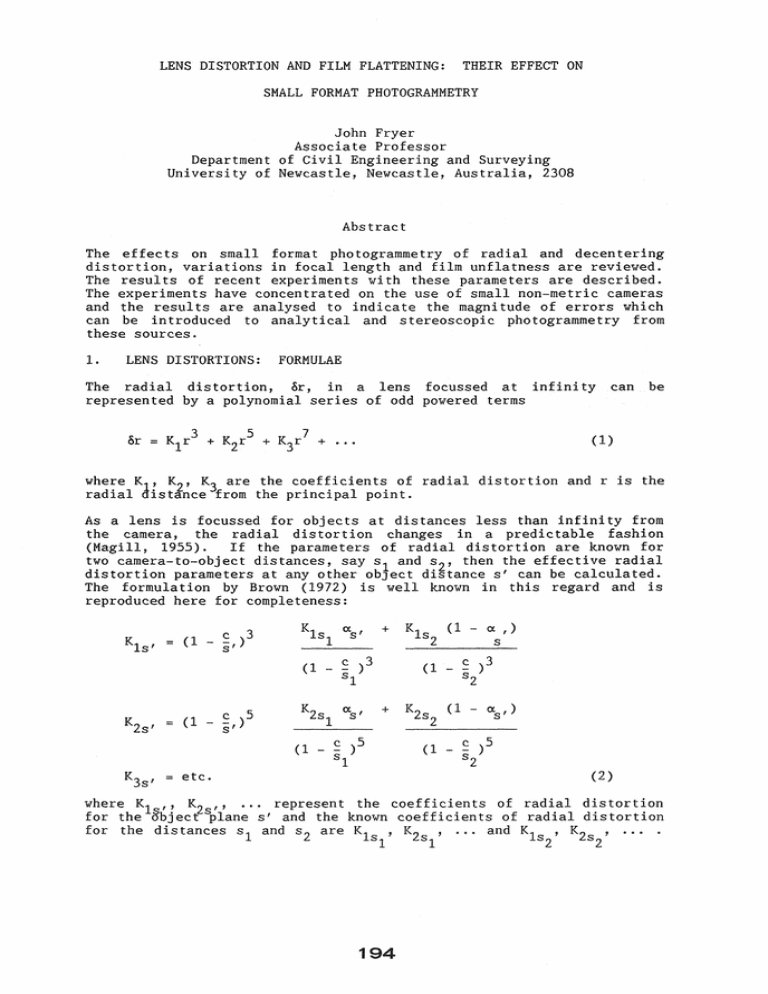

Generates a mapping that corrects image using polynomial lens distortion model. ◆ vpiWarpMapGenerateFromPolynomialLensDistortionModel() Resulting warp map that serves as input to Remap algorithm. For monocular cameras, Kout is usually equal to Kin. New camera intrinsic parameters applied to the undistorted image. remaining variables are the input parameters to this function.Ĭamera extrinsic parameters that defines the camera center position and its heading in world coordinates.\(L\) is the fisheye lens distortion model (not a matrix), see VPIFisheyeLensDistortionModel.\(y\) is the corresponding homogeneous coordinate on the distorted image.\(x\) is the input homogeneous coordinate.The mapping is defined by the following matrix equation: Given camera intrinsic and extrinsic parameters, and fisheye lens distortion model, generates a VPIWarpMap suitable to be used by Remap to undistort images captured by cameras equipped with fisheye lens. Generates a mapping that corrects image distortions caused by fisheye lenses. Function Documentation ◆ vpiWarpMapGenerateFromFisheyeLensDistortionModel() \ĭefinition at line 76 of file LensDistortionModels.h. \(r\) is the distance of a pixel from the image center.\(\theta\) is the angle from the optical axis.Specifies the equidistant fisheye mapping. More.ĭetailed Description Data Structure Documentation ◆ VPIFisheyeLensDistortionModel VpiWarpMapGenerateFromPolynomialLensDistortionModel (const VPICameraIntrinsic Kin, const VPICameraExtrinsic X, const VPICameraIntrinsic Kout, const VPIPolynomialLensDistortionModel *distModel, VPIWarpMap *warpMap) VpiWarpMapGenerateFromFisheyeLensDistortionModel (const VPICameraIntrinsic Kin, const VPICameraExtrinsic X, const VPICameraIntrinsic Kout, const VPIFisheyeLensDistortionModel *distModel, VPIWarpMap *warpMap) Holds coefficients for polynomial lens distortion model.

This documentation is licensed under the Creative Commons Attribution-NonCommercial-ShareAlike 4.0 International License.Holds coefficients for fisheye lens distortion model. The result will be stored in the main Clover camera calibration file: /home/pi/catkin_ws/src/clover/clover/camera_info/fisheye_cam_320.yaml. If calibration was successful all straight lines will remain straight on the image displayed.Ĭlick the COMMIT button to store calculated calibration parameters. Lens photography starts with choosing the right camera lens and knowing that different focal lengths, from wide-angle to telephoto, affect your images. The corrected camera image view will be displayed as well. When the calculation is done, you'll see calculated parameters in the terminal. The process of calculation will take several minutes. Move camera toward and away from the chessboard, so that it is observed from different distance.Ĭlick the CALIBRATE button, when it's active.Rotate the chessboard around all 3 axes.Place the chessboard in the left, right, top and bottom part of the frame.When the calibration program starts, move the drone so the calibration board is observed from different angles: For example, value 0.03 corresponds to 3 cm. Run camera calibration (on your computer): ROS_MASTER_URI= rosrun camera_calibration cameracalibrator.py -size 6x8 -square 0.108 image:=/main_camera/image_raw camera:=/main_cameraĬhange the value 0.108 to actual size a square on the chessboard in metres. Print the chessboard on paper or open it on the computer screen.
#Camera lens distortion coefficients install
Using the Terminal, install camera_calibration package to your computer: sudo apt-get install ros-melodic-camera-calibrationĭownload the chessboard – chessboard.pdf.

In order to calibrate the camera with the camera_calibration ROS-package you need a computer with OS GNU/Linux and ROS Melodic installed. Usually they use calibration images, "chessboards" or combinations of "chessboards" and ArUco-marker grids ( ChArUco). There are several tools allowing to calibrate the camera and store calculated parameters into the system. You can read more about camera distortion model used in the OpenCV documentation. These parameters include focal lengths, principal point (which depends on camera lens placement regarding the centre), distortion coefficient D. Camera calibration can significantly improve the quality of nodes related to computer vision: ArUco markers detection and optical flow.Ĭamera calibration process allows to define the parameters reflecting the specific lens installed.


 0 kommentar(er)
0 kommentar(er)
